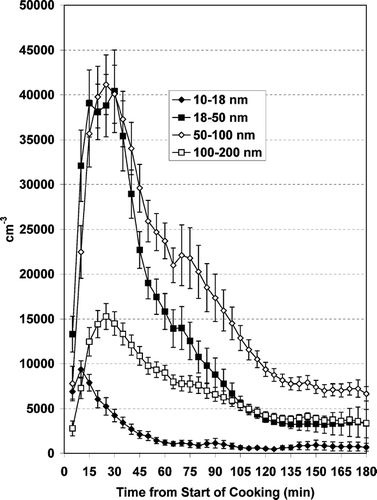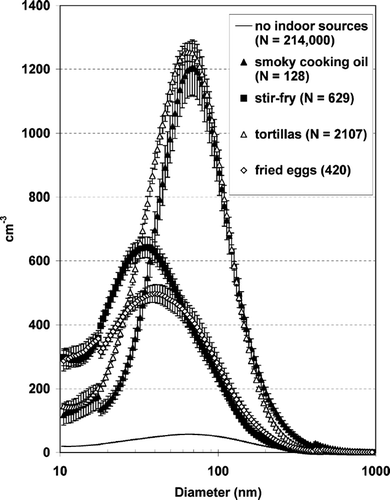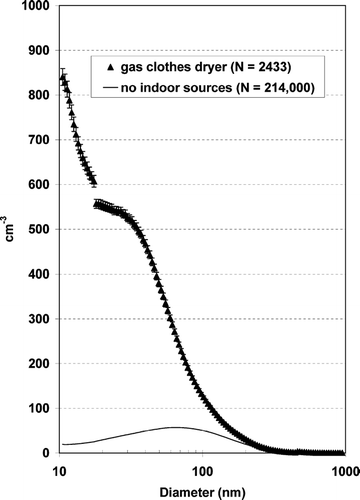Figures & data
FIG. 1 Indoor number concentrations while indoor sources are active compared to concentrations due to outdoor particle infiltration. Error bars on means are standard errors.
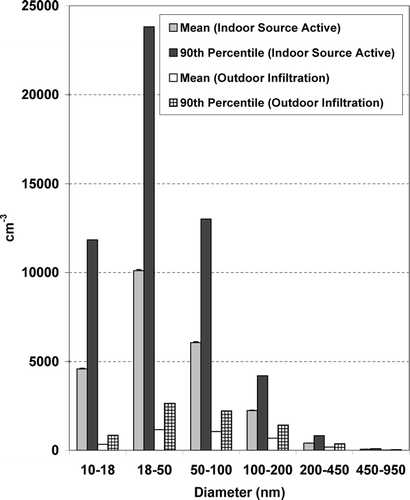
TABLE 1 Number concentrations (cm− 3) for six size ranges
TABLE 2 Indoor and outdoor contributions to particle number concentrations (cm− 3)
TABLE 3 Number and durationFootnote a of 18 selected activities, with modal diameters for both particle number and volume
TABLE 4 Size-resolved particle number (cm)− 3 produced by 18 activities
TABLE 5 Size-resolved particle volume (μm/cm)3due to 18 activities
FIG. 2 Size distributions of outdoor particles measured outdoors and indoors. “No indoor sources” refers to indoor measurements showing no influence of indoor sources. “Open windows” refers to indoor measurements made with windows open. “Unknown outdoor source” refers to indoor measurements showing slow increases typical of slow outdoor changes in concentration, with no apparent indoor source. “Outdoors” refers to measurements made outdoors. Discontinuities at 18 nm and 440 nm in this and following figures are due to different ranges associated with the two nozzle assemblies.
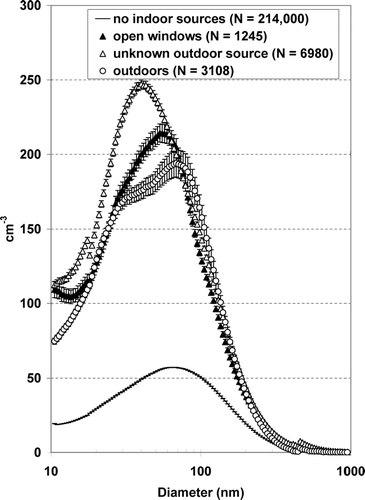
FIG. 3 Size distributions of particles created by the gas burner only (boiling water for tea) and the gas burner and electric toaster or toaster oven.
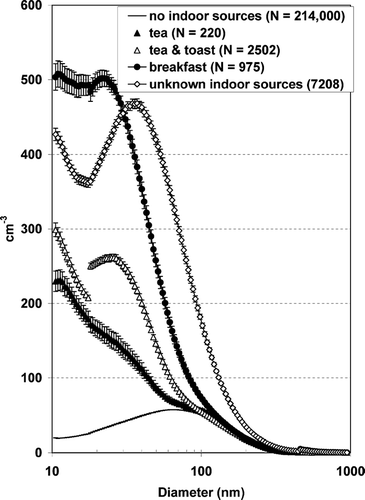
TABLE 6 Variation of infiltrated outdoor particle number concentration (cm− 3) by size category and by year
TABLE 7 Variation of infiltrated outdoor particle number concentration (cm− 3) by size category and by month
TABLE 8 Variation of infiltrated outdoor particle number concentration (cm− 3) by size category and by day of week
FIG. 8 Diurnal variation, no indoor sources. The increase observed at dinnertime (6–8 PM) may be partly due to difficulty in detecting minor peaks due to cooking.
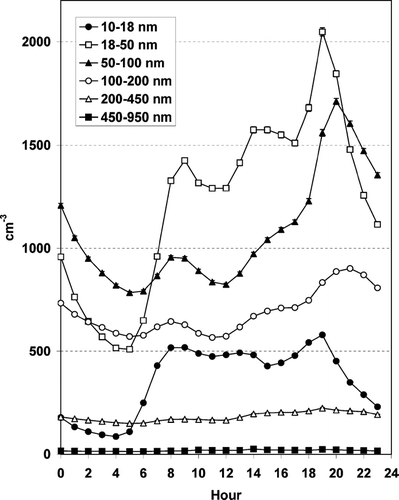
FIG. 9 Diurnal variation, total particles (< 950 nm). When indoor sources are active, the mean particle concentration indoors is 6–10 times that due to infiltration of outdoor particles, with the main contribution coming during dinnertime cooking.
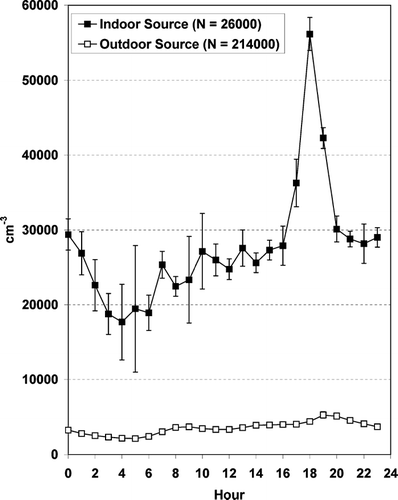
FIG. 10 Ultrafine particle concentration time course due to boiling water for tea and toasting bread (N = 245 events). Error bars are standard errors.
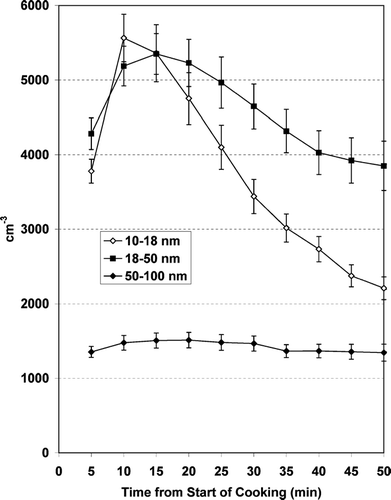
FIG. 11 Particle concentrations during and after baking a potato in a gas oven for 45 minutes and broiling fish in the oven for 8 minutes. (N = 66 events).
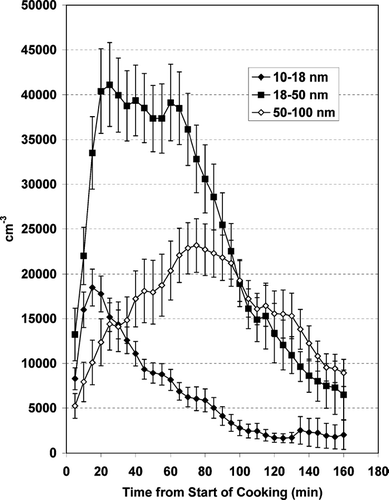
FIG. 12 Particle concentrations during and after deep-frying tortillas in peanut oil and then baking them with cheese and beans in an oven for 8 minutes. (N = 74 events).
